Montreal’s Museum of Fine Arts is the oldest museum in Canada. Its collections cover art from across the world. The museum is particularly strong in Canadian art and Decorative Arts.
Museum History
Art Association of Montreal
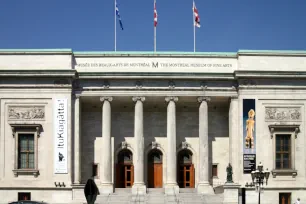

At around 1860, at a time when Montreal was the largest city in what would soon become the country known as Canada, a group of collectors set up an art association. Its goal was to organize art exhibitions, build an art collection and establish an art school.
They started to raise funds to build an edifice for the art collection, the first in Canada. The art association struggled for years to gather sufficient funds until, in 1877, they were blessed with a substantial gift of money, land, and a collection of paintings from Benaiah Gibb.
The First Museum
By 1879, the first gallery was finished, and the association began to acquire more paintings, including those done by students at their school of art. This was the beginning of an impressive Canadian collection for this art museum. Several other private collections were acquired in addition to Gibb’s, and by 1909, the association decided a larger museum was in order to house the new works.
A new Museum Building
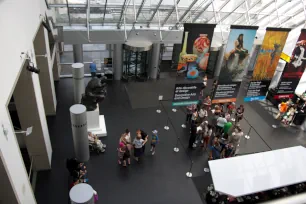
Instead of expanding the existing building, architects Edward and William S. Maxwell were chosen to design a new one. This museum would have a white marble facade, a high portico with colonnade and an ornate monumental staircase.
This pavilion in Beaux-Arts style was inaugurated in 1912. It was originally named after the museum’s largest benefactor, Benaiah Gibb, but is now known as the Michal and Renata Hornstein Pavilion.
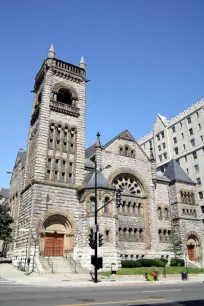
Expansions
In the decades that followed, more was added to the permanent collection of the museum, including many contemporary works, especially those by Canadian artists. The museum was expanded in the mid-1970s, and another expansion in 1991 doubled its exhibition space.
The architect for this most recent expansion was Moshe Safdie, the renowned creator of Habitat ’67 and the Musée de la Civilisation in Quebec. Safdie’s modernist annex sits across the street from the 1912 building.
In 2011 the museum expanded once again by creating an annex to the adjacent Erskine and American Church. The pavilion in the nineteenth-century church building is now named after the largest private donors: Claire and Marc Bourgie. The church itself has been transformed into the Bourgie Hall, a 444-seat concert venue. It boasts twenty Tiffany stained-glass windows that depict biblical scenes.
Museum Collection
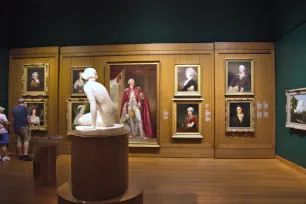
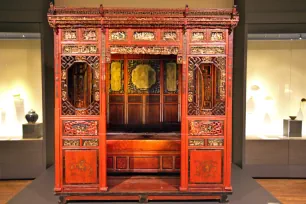
The collections of the Montreal museum of Fine Arts are currently spread over four different pavilions, but all are connected by underground tunnels.
Jean-Noël-Desmarais Pavilion
The museum’s main entrance is now at the modern Jean-Noël-Desmarais Pavilion. This modern building features a great sloping glass roof, which adds lots of sunlight to the public foyer.
This building is home to the museum’s collection of international art, which ranges from medieval art to contemporary works. The museum has an interesting selection of European art, including many paintings, with a particularly high representation of French artist. A highlight is the impressionist collection with paintings from artists such as Monet, Cézanne and Renoir. Modern artist represented include such names as Picasso, Matisse and Dali. And there’s more than just paintings. You can also admire sculptures from artists such as Auguste Rodin and Henry Moore.
Michal and Renata Hornstein Pavilion
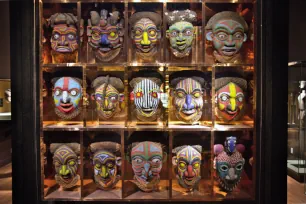
The magnificent 1912 Beaux-Arts building across the street is now home to the museum’s world culture collection. Here you can find a fascinating sampling of artwork from regions around the world. There are African masks, intricately decorated Japanese boxes, Chinese vases, Tibetan Buddha sculptures, and pre-Columbian art from the Americas.
The same building is also home to a collection of objects from the antiquity such as vases, coins and jewelry that were excavated in the Mediterranean. The objects date from the Early Bronze Age to the late Classical period.
Liliane and David M. Stewart Pavilion
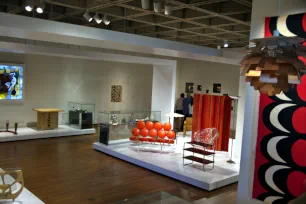
One of the highlights of the museum is its impressive department of decorative arts and design, which was first added in 1917 and boasts a real international feel with pieces from every corner of the world.
It expanded significantly in 2001 with the inclusion of the twentieth-century design collection of the Museum of Decorative Arts. The collection spans six centuries and all sorts of objects are represented, including furniture, ceramics, glass, silverware and textiles.
Claire and Marc Bourgie Pavilion
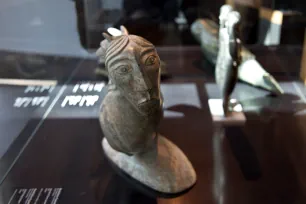
The museum is particularly lauded for its world-class collection of Quebec and Canadian art, which is displayed chronologically over six floors. It starts on the top floor with a fascinating collection of Inuit art, in particular woodcarvings and sculptures.
On the other floors you can witness the gradual evolution of Canadian art, starting with the emulation of European art before finding its own way thanks to the famous Group of Seven, whose landscape paintings are well represented.

